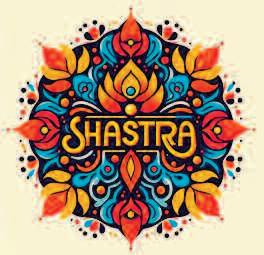
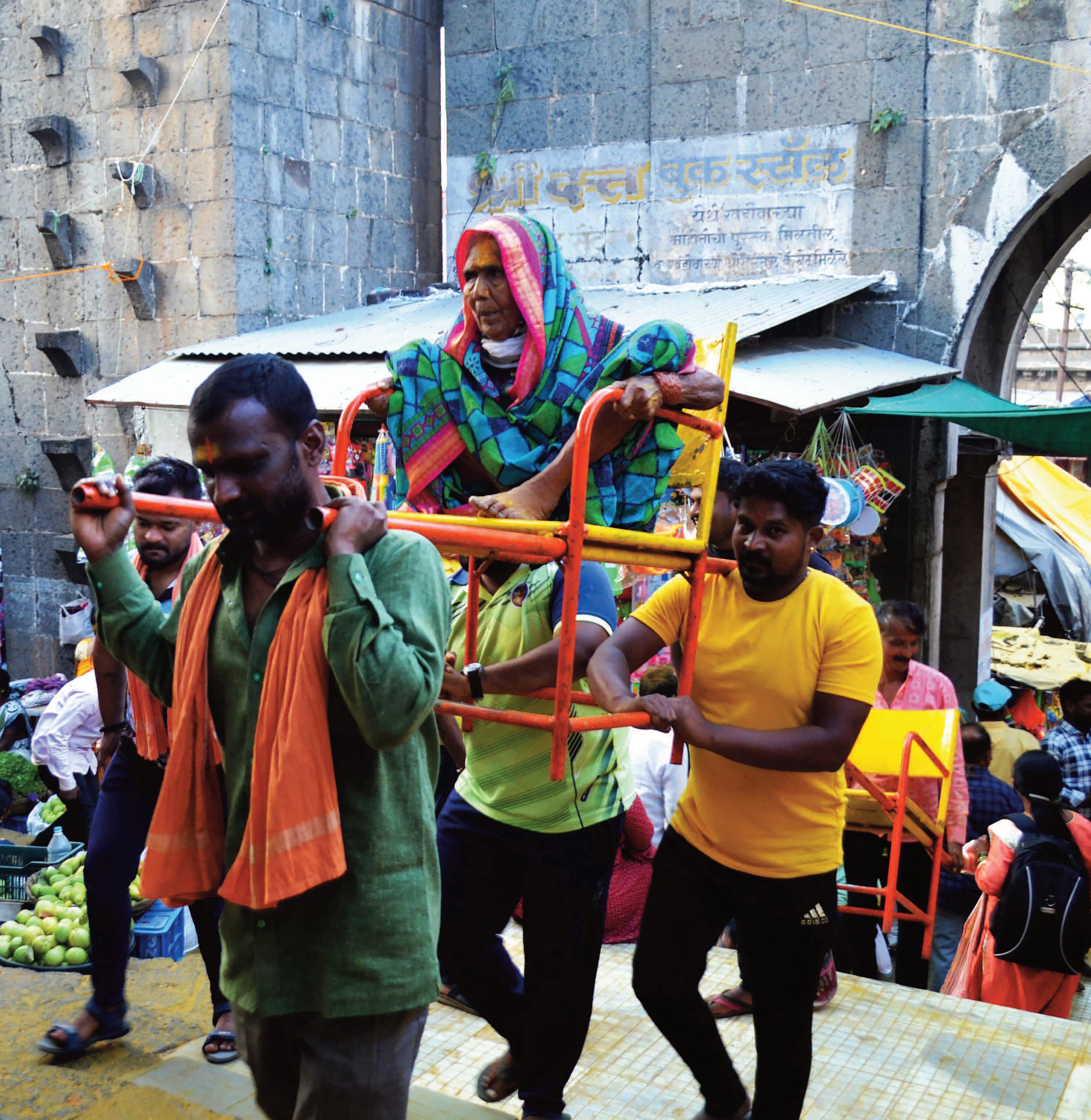

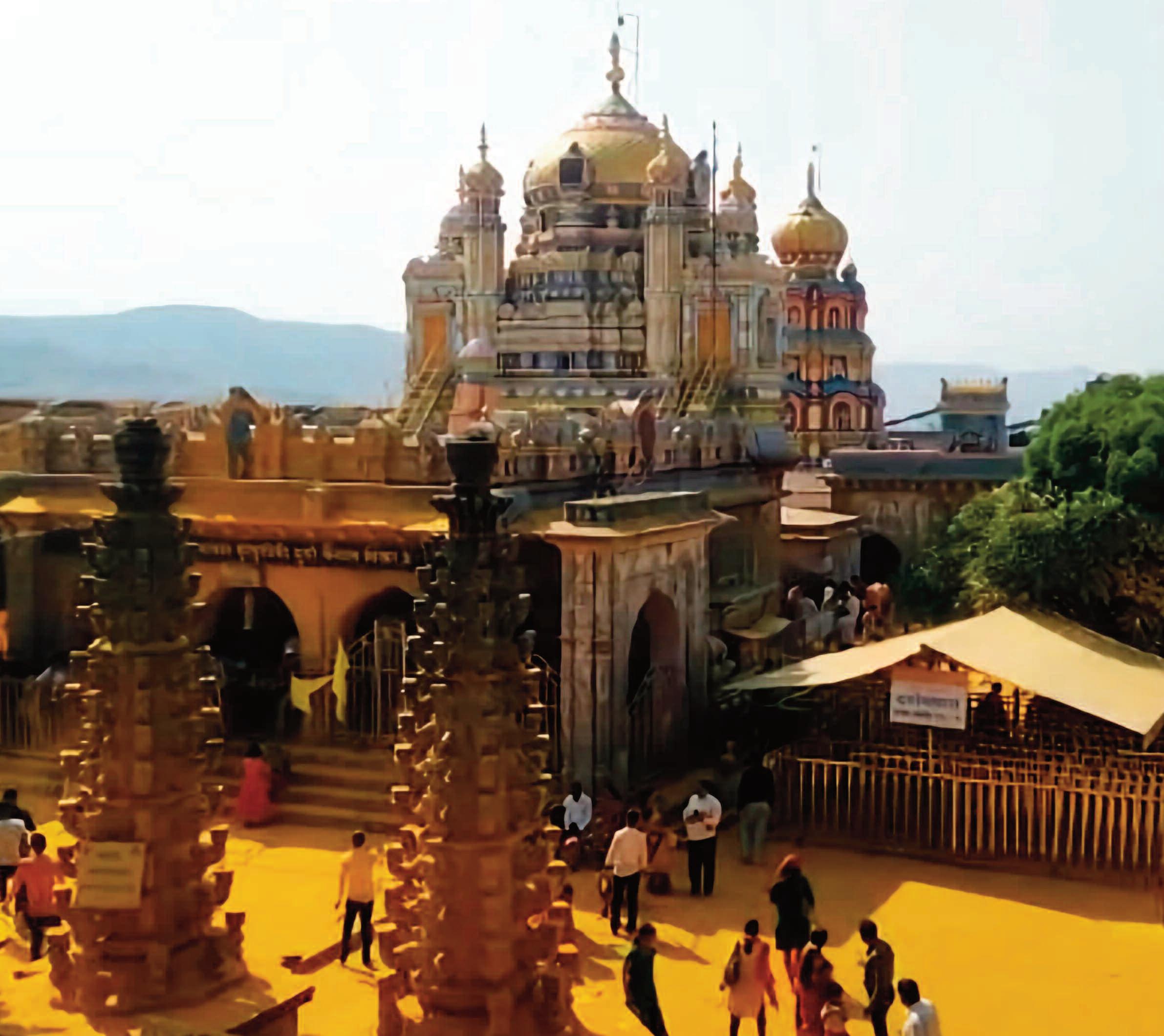





he charming town of Jejuri extends a warm invitation to travelers and the devout, offering an irresistible blend of historical charm, aweinspiring vistas, and a diverse collection of temples. This idyllic destination, graced with ancient temples nestled amid rugged hills, stands as a veritable gem, eagerly awaiting exploration.

Encompassing a wealth of cultural heritage and deep spiritual significance, Jejuri promises an immersive journey that etches lasting memories in the hearts of all who embark upon its paths.
Upon arrival in Jejuri, visitors are welcomed by the breathtaking presence of the Khandoba Temple, an esteemed landmark that commands the town's skyline with its grandeur and reverence.
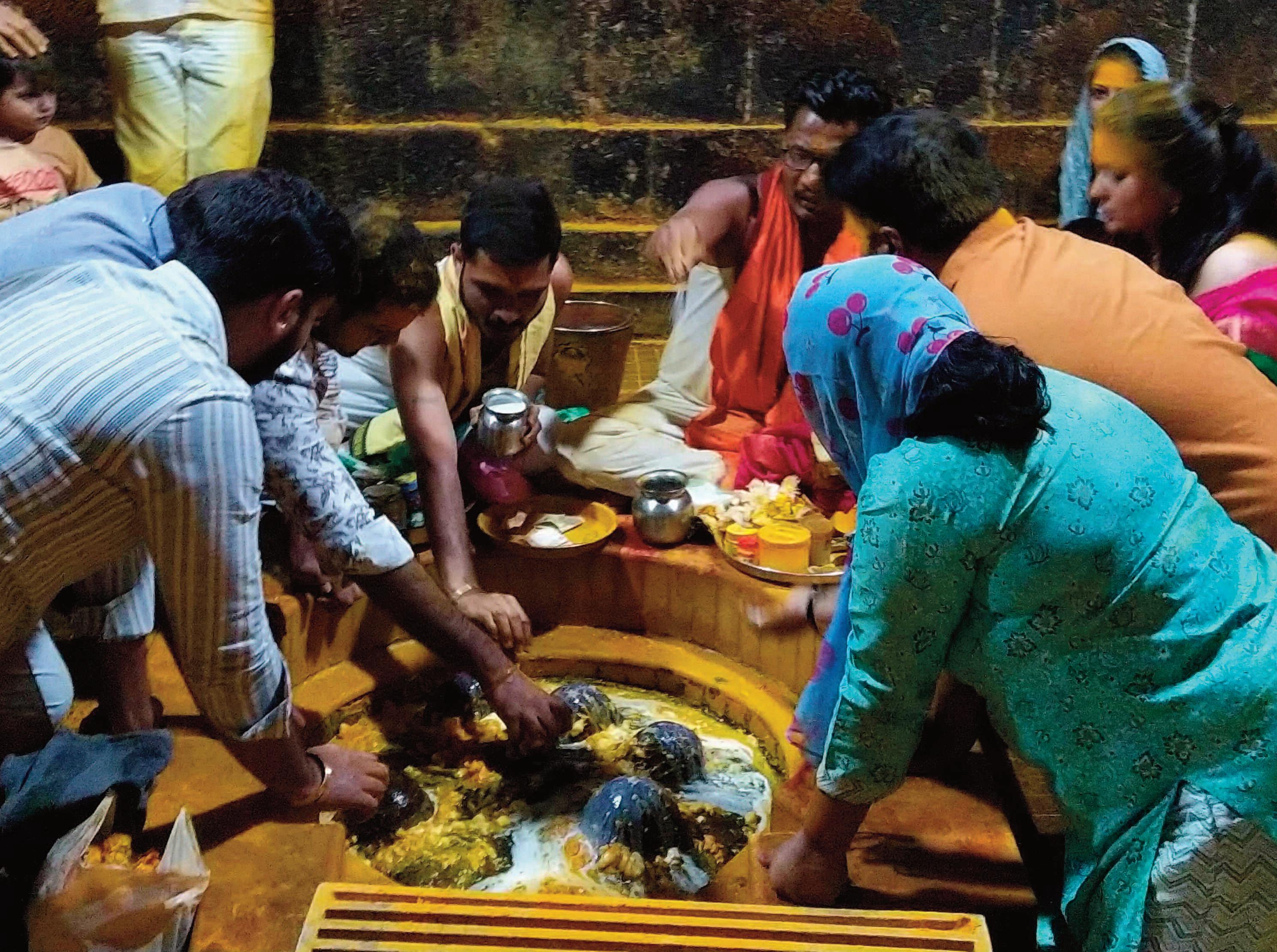


The age-old temple devoted to Lord Khandoba stands as a remarkable example of architectural excellence and bears profound religious significance for numerous worshippers.




During festive occasions, the temple emanates an unparalleled splendor and vibrant energy that captivates the hearts of pilgrims hailing from distant corners of the world, drawing them to its sacred grounds.
Jejuri, nestled within the Purandar taluka of Pune district, holds a myriad of a ractions waiting to be explored. Wandering through the meandering pathways of Jejuri is akin to embarking on a treasure hunt, as visitors are greeted with delightful surprises and hidden gems at every twist and turn.
The town's bustling bazaars offer an immersive shopping experience, where one can immerse themselves in the rich maze of traditional handicrafts, vibrant textiles, and exquisite jewelry, each piece telling a story of its own.
Engaging with the amiable locals, renowned for their genuine warmth and hospitality, is an enriching experience in itself.


The rugged terrain, adorned with foliage and ancient forts sca ered throughout, presents awe-inspiring panoramas that leave a lasting impression.
These natural marvels provide an ideal escape, allowing visitors to unwind and recharge away from the clamor of urban life. Exploring the scenic trails of Vetal Hill, also known as Vetal Tekdi, promises adventurers with sweeping vistas of the lush countryside. Rising 800 meters above sea level, Vetal Hill boasts a temple dedicated to Vetala at its summit, from which it derives its name.
Additionally, an observation deck managed by the Indian Forest Department enhances the experience, offering visitors a bird's-eye view of the surrounding landscape.
In 1739, during the historic Ba le of Vasai, Chimaji Appa, a distinguished general of the Maratha Empire and brother of Peshwa Bajirao, emerged victorious over the Portuguese forces, marking a significant chapter in the region's history.


Following his victory, Appa and his soldiers retrieved 38 church bells from Portuguese churches and distributed them among 34 temples across Maharashtra, including the Khandoba Temple in Jejuri.
Beyond the temple's storied past, Jejuri's historical significance is further accentuated by the formidable forts surrounding the temple town.
Many of these forts played integral roles in the ascension of the Maratha Empire, adding another layer to the rich history in the region.


Nestled within the ancient walls and towering gateways, visitors can immerse themselves in tales of bravery echoing through the centuries within the fortress's rich history.
Perched atop a hill with strategic brilliance, the fort affords a commanding view of the sprawling plains below, captivating visitors with its aweinspiring architectural splendor.


Jejuri shines as a renowned pilgrimage site, drawing devout followers of Lord Khandoba from distant lands to pay homage to their beloved deity. Also known as Malhari and Martand, Khandoba represents a manifestation of Lord Shiva, revered and worshipped by various castes and communities across Maharashtra as their clan god.
Khandoba's wives, Banai and Mhalsa, hail from distinct backgrounds the former from the nomadic shepherd tribe known as the Dhangars and the la er from the Lingayats of Karnataka.
Within Jejuri, nestled amid the descending Purandar range that envelops the sacred town, stand two temples dedicated to Lord Khandoba. The newer temple, towering at a height of 250 feet, boasts of grandeur and prominence. Conversely, the older temple rests on the elevated Kadepathar plateau, approximately 400 feet higher and a few miles away. This older sanctuary is revered as more sacred by devotees.


The Kadepathar plateau, sprawling across eleven acres, is not just home to the revered shrines dedicated to Lord Khandoba but also harbours numerous other sacred sites. The Peshwa Lake, a serene creation by the last Peshwa, Bajirao II, enhances the mystical ambiance of the plateau.
Embellished with intricate rock-cut sculptures and ancient inscriptions, these sacred spaces evoke a deep sense of wonder and admiration for the artistic legacy of past generations. Each visit to these hallowed grounds unfolds as a journey of exploration, providing glimpses into the rich cultural heritage that defines the town's essence.
The exuberant celebrations of Holi stand out, as locals converge to revel in the festivities, saturating the town in a riot of colors and fostering an atmosphere of joyous camaraderie that remains etched in one ' s memory.


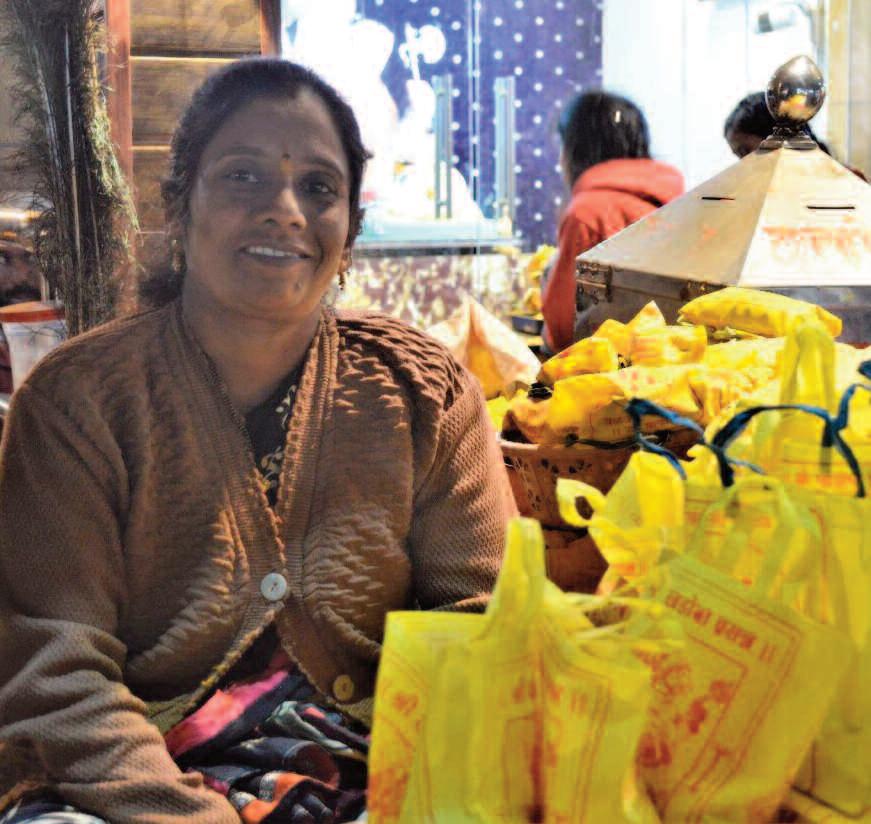

The festival of Diwali brings a dazzling array of lights and fireworks to Jejuri, creating an enchanting atmosphere that leaves a lasting impression on all who experience it.
Champa Shashti, a significant festival dedicated to Lord Shiva, is observed in Jejuri and across the Karnataka and Maharashtra regions. Celebrated on the sixth day of the Margashirsha month during the Shukla Paksha, it a racts millions of devotees to Jejuri to offer prayers to Khanderao or Khandoba, an incarnation of Lord Shiva.
Somavati Amavasya, another important festival, falls on a Monday and marks the no moon day. On this auspicious occasion, millions of Lord Khandoba's devotees gather at the temple carrying turmeric powder, known as 'Bhandara'.


During the festive celebrations, participants joyfully throw turmeric into the air and apply it on themselves and others, accompanied by singing and dancing. This colorful tradition has earned the pilgrim town the moniker 'Sonyachi Jejuri', meaning 'golden Jejuri'. Devotees engage in bathing with yellow turmeric powder and perform penance on this auspicious day.

Jejuri hosts several other significant occasions, each bearing religious or cultural significance, including Chaitra Purnima, Guru Purnima, Shravan Purnima, Ghatasthapana, Dussera, Champa Shashti, Paush Purnima, Mahashivratri, and more.
Renowned for housing one of Maharashtra's most revered temples, the Khandoba Temple, Jejuri is often referred to as 'Khandobachi Jejuri'. Khandoba, worshipped with deep reverence by the Dhangars, is hailed as the 'God of Jejuri'.



On September 14, 1752, an important treaty between Tarabai and Balaji Bajirao was formalised at this location.
Upon ascending the hill leading to the temple, a palpable sense of anticipation permeates the atmosphere. The gentle breeze carries the fragrance of incense and the melodic strains of devotional hymns performed by the Gondhalis, intensifying the spiritual aura enveloping the sacred grounds.
The panoramic vistas unfolding along the ascent offer a breathtaking view of the surrounding landscapes, amplifying the reverence and tranquility felt by visitors. The temple's architectural magnificence and intricate craftsmanship inspire awe, reflecting the dedication and skill invested in its construction.
Towering spires, adorned with vibrant hues, reach skyward, presenting a captivating spectacle against the azure backdrop. The electric spiritual ambiance of the area can only be fully appreciated through personal experience.


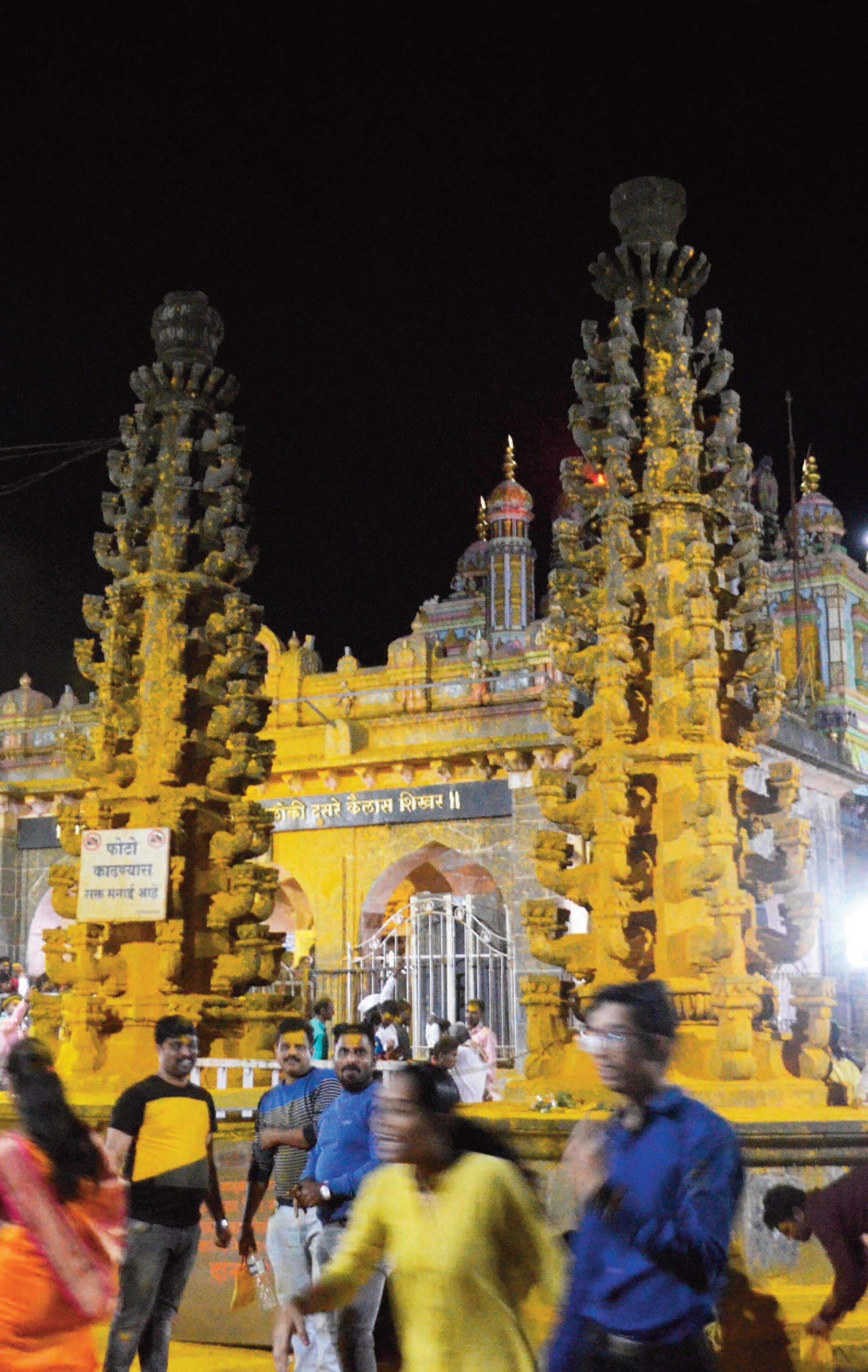
The Lavthaleshwar Temple, situated between Jejuri and Saswad in the Pune district, is a renowned Shiva temple. It is a modest underground temple housing a Shivaling, Nandi, and an idol of Naga. Tradition holds that the famous prayer or Shankar Aarti, 'Lavthavati Vikrala Brahmandi Mala,' was composed by Samarth Ramdas Swami within these sacred confines.
Apart from their religious significance, temples in Jejuri offer a sanctuary from the bustle of daily life. The tranquil surroundings, complemented by scenic hilltop vistas, foster an atmosphere of tranquility. Visitors can partake in quiet reflection, immersing themselves in the peaceful ambiance and finding solace amidst the embrace of nature and the spiritual essence imbued within the temples.


In addition to the temple, Jejuri offers various a ractions for tourists. The town boasts an ancient fort, commonly referred to as the 'Jejuri Gad,' which offers a panoramic vista of the surrounding landscape.
Furthermore, Jejuri is renowned for its step wells, showcasing remarkable craftsmanship and engineering from ancient times.

The Khandoba Temple is celebrated for its unique traditions and rituals, notably the 'Bhandara,' wherein the deity is showered with turmeric powder. Devotees enthusiastically partake in this vibrant ceremony, enveloping the idols of Lord Khandoba and themselves in a golden hue of turmeric.
This ritual symbolises Lord Khandoba's association with the color yellow and his triumph over malevolent forces. The temple resonates with devotional chants, music, and a festive ambiance during this revered ceremony.


^ Ö Öêêçì é çÑ Ñ ÇÉ î îççíÉÉ É ë é éççëëÉ É Ñ Ñççê ~ Ö Öêêççììé é é éá á Å ÅíìêêÉ ~ ~í ~ Ä Äì ë ë ëííç ç é Çìêêáå å Ö ~ í íêêáé é íç ç g gÉ àìêá á

As devotees ascend the steps of the 'Jejuri Gad' or fort to reach the temple, they throw turmeric powder in the air, filling the atmosphere with a vibrant yellow hue. While showering fellow climbers with the powder, they chant the phrase 'Yelkot yelkot jai malhar.'

iç Å~~ä éÜÜç íç ç Ö Öê~ ~ é éÜ É Éêë í~ âÉ ~ ÄêêÉ É ~ ~â â Ñêêç ç ã ë ëÜ Ü çç ç íá åÖ Ö Å çììéäÉ É ë í íç ç ë ëííêêááâÉ ~ é éççëëÉ ~ í g gÉà à ìêêá
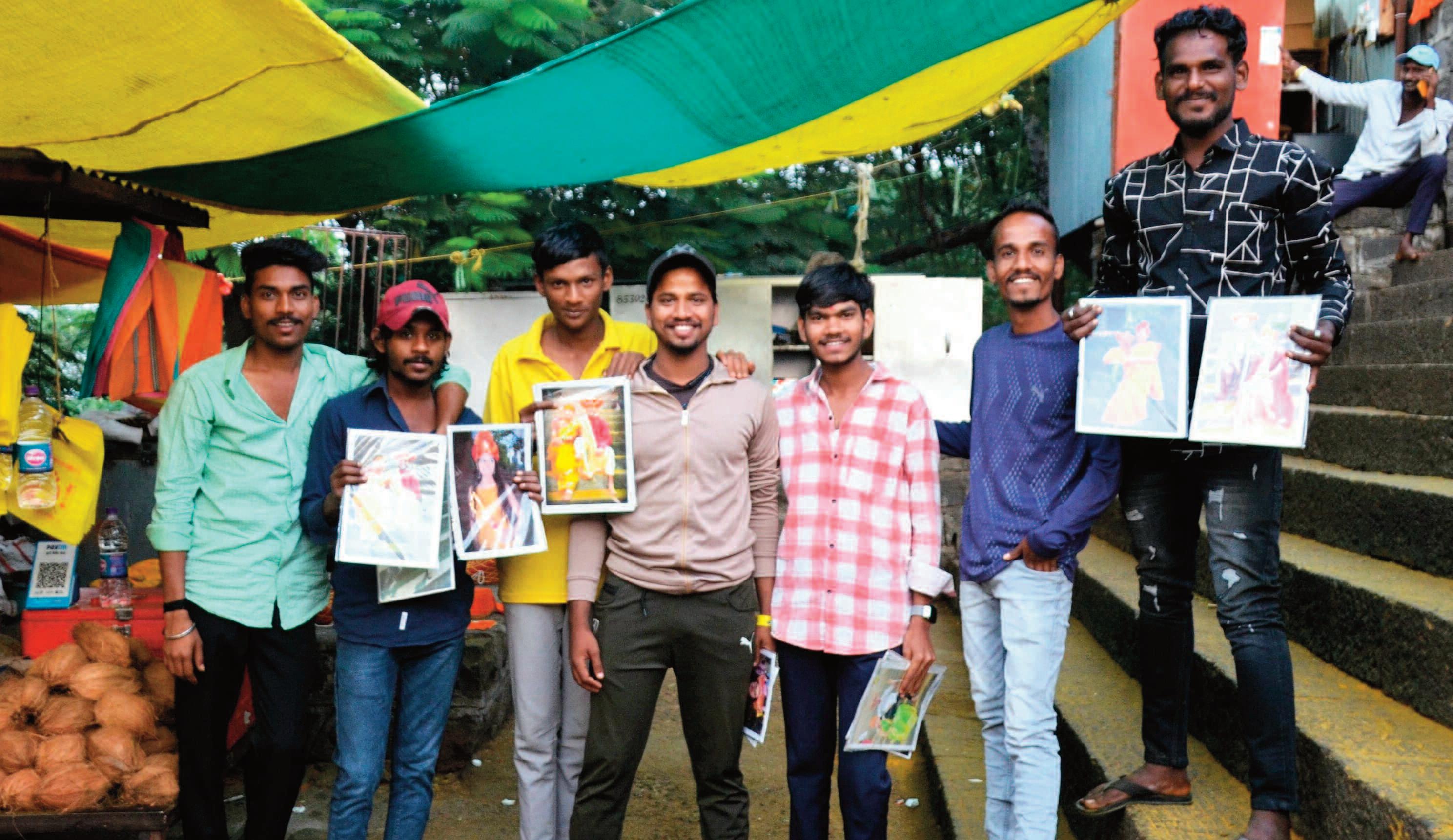
Embarking on a pilgrimage to Jejuri, home to the revered Khandoba Temple, has become a cherished tradition among newlyweds. This sacred journey includes a significant ritual where the husband lifts his wife while ascending the imposing stone steps, symbolising their unity and commitment as a married couple.
It is believed that by lifting their wives, grooms demonstrate a capability to protect and support their life partners throughout their marital journey.


As couples step into the temple adorned with vibrant decorations and an atmosphere of sanctity, they are enveloped in a captivating ambiance brimming with love and faith. Husbands mentally and physically prepare themselves for the upcoming task, their anticipation mounting as they await their turn to lift their beloved wives. When summoned by the temple priest, grooms approach their radiant brides with confidence gleaming in their eyes.

Amidst laughter, cheers, and jubilant exclamations, families and friends gather around the couple as they prepare for the significant lift. The excitement intensifies as each husband prepares to hoist his beloved bride into his arms, with palpable anticipation coursing through every onlooker, generating an electrifying energy.


And then, with a surge of strength and determination, husbands effortlessly lift their wives high above their heads. In that fleeting moment suspended in time, a profound connection between two souls is manifested.
This ritual doesn't go unnoticed, as eager relatives seize the opportunity to immortalise this tender, symbolic gesture by capturing it on their trusted mobile devices. Additionally, some devotees seek the services of professional photographers who cater exclusively to those ascending towards the sublime abode of Khandoba.


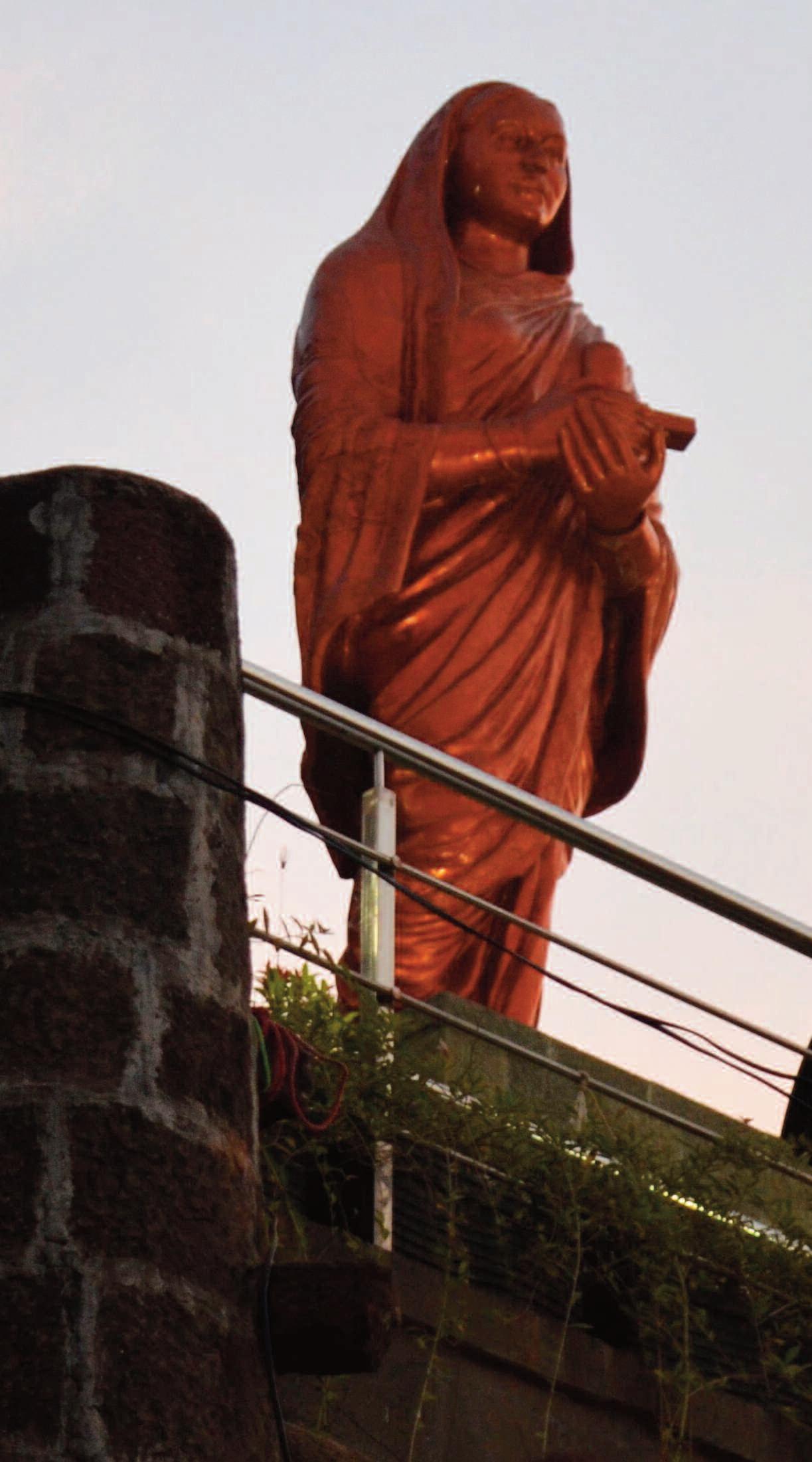
^Üáä
Another notable landmark in
Jejuri is the statue of Ahilyabai Holkar, situated alongside the steps of the Jejuri Gad, en route to the Khandoba Temple. Many visitors pay homage to her here.
Ahilya Bai Holkar, born on May 31, 1725, rose to prominence as the hereditary noble queen in the Maratha Empire and played a pivotal role in establishing Maheshwar as the capital of the Holkar Dynasty, located in Madhya Pradesh.
Following the untimely deaths of her husband, Khande Rao
Holkar, and father-in-law Malhar Rao Holkar, Ahilyabai assumed leadership and began governing the Holkar dynasty. She personally led military campaigns alongside the military commander Tukoji Rao Holkar. Ahilyabai oversaw the construction of numerous temples and Dharmashalas, providing sanctuaries for the devout and pious throughout the nation.
(With inputs from Nandini Rao, Ruchi Verma and Neeti Prakash)





^_lssbW W pááÖÖÜÜíë ç çÑ Ñ ÇÉîç íÉ É É Éë ë á áããããÉ êëëÉÉÇ Ç á å íÜ Ü É É ÉåÅ Å Ü~~å å í íááååÖ Ö ~ááê çÑ Ñ gÉààì ê êá á Ö ÖêêÉ É É Éí îá ëááííççêêë ïÜç Äìó ó ÄÜ Ü ~ ~åÇÇ~~ê~ ~ Ñ Ñêêççã ã ä äç Å~ ä ëÜçééââÉÉÉ É é éÉ ê êë ëá ííáå Ö Ä ÄÉÉÜá á åÇ Ç ë ëãã~ ~ ää ä é éááääÉ ë ç Ñ Ü ~ ~ääÇÇááI â âììããââììã ã ~å Ç Åç Å Åççå ì ìí í é éá á ÉÅÉ É ë ~ ä ää ä ~ ~ä ä çåÖ í íÜ Ü É ï~ ~ ó í íç ç íÜÜÉ É íÉÉãééääÉÉK K jìëëääá ã Ñ Ñêììá í ë ëÉ É ä ääÉ É ê êëI ~ ~ä ä ë ëç ç Ç ÇÉ É î îçì í Ñ Ñççää ä ç çï Éêë ë ç çÑ h hÜ~~å å Ç ÇççÄ~ ~ í íÜ É Éó ó ïççêëëÜ Ü á áé ~ ë j j~ ä äääì h hÜ ~ ~å I Å~ ~ å Ä ÄÉ É ëÉ É Éå _biillttW W a É ÉîçííÉÉÉ É ë Ñêêççã ã í íÜÉ É áå å í íÉ êááç ç ê êë ë ç Ñ j j~~Ü ~ ~êê~~ëÜ í íêê~ é~~ó ç çÄÉÉá á ë~å å ÅÉ É í íç ç hÜÜ~~å å Çç Ä~ ~ K







